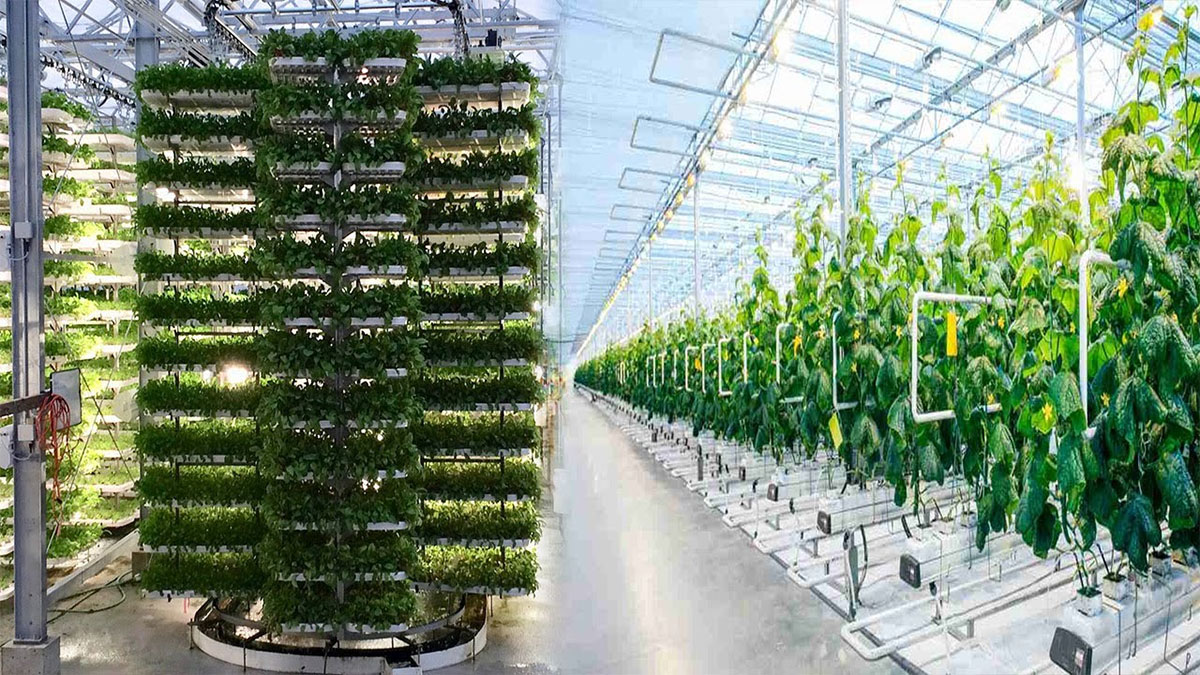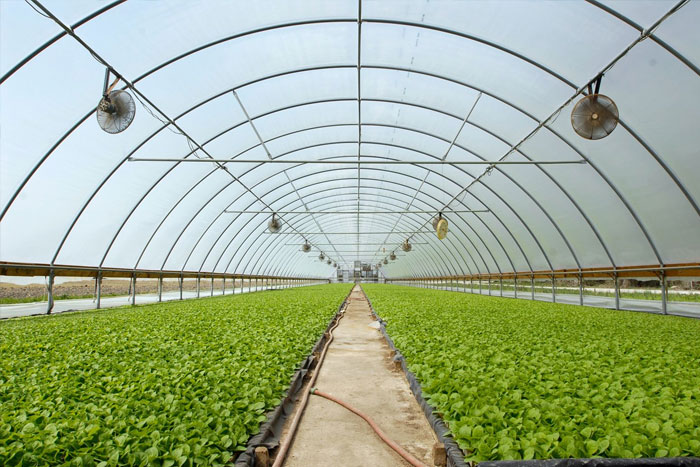
Greenhouses are structures designed to create optimal growing conditions for plants by controlling temperature, humidity, and light. They offer a controlled environment that allows for year-round cultivation, protection from adverse weather, and increased crop production.
What are the greenhouse benefits?
Here are some key points regarding the greenhouse benefits of fracking:
- Lower Carbon Emissions: Natural gas produces fewer carbon dioxide (CO2) emissions compared to coal or oil when burned for energy generation. Substituting natural gas for coal in power generation can lead to significant reductions in greenhouse gas emissions, as natural gas combustion emits less CO2 per unit of energy produced.
- Air Quality Improvement: Shifting to natural gas for electricity generation can also result in reduced emissions of other air pollutants, such as sulfur dioxide (SO2), nitrogen oxides (NOx), and particulate matter. These pollutants have adverse effects on air quality, human health, and the environment. Natural gas combustion produces fewer of these pollutants compared to other fossil fuels.
- Backup for Intermittent Renewables: Natural gas power plants can serve as backup or balancing sources for intermittent renewable energy sources like wind and solar. The flexibility of natural gas-fired generation helps ensure reliable electricity supply when renewable energy production fluctuates, reducing the need for more carbon-intensive backup sources like coal-fired power plants.
- Transition Fuel: Natural gas is often considered a transitional fuel in the shift towards a low-carbon energy system. It can play a role in replacing more carbon-intensive fuels like coal while renewable energy technologies continue to develop and become more cost-effective.
Read more:What Is And Artificial Grass Underlay
Different types of greenhouses
There are various types of greenhouses designed to create controlled environments for plant growth. Here are some common types:
- Lean-to Greenhouse: A lean-to greenhouse is built against an existing structure, such as a wall or another building. It shares one wall with the supporting structure, which helps provide stability and may allow for easier access to utilities.
- Freestanding Greenhouse: A freestanding greenhouse is a standalone structure that can be placed anywhere on a property. It is not attached to any existing building and offers more flexibility in terms of location and design.
- Ridge-and-Furrow Greenhouse: This type of greenhouse consists of a series of connected ridges with sloping sides, creating a series of furrows in between. This design maximizes space and allows for efficient water drainage and ventilation.
- Quonset Greenhouse: Quonset greenhouses have a semi-circular or curved shape, resembling a tunnel. They are usually made of metal frames covered with plastic or polycarbonate sheeting. Quonset greenhouses are relatively easy to construct and provide a cost-effective option for small-scale growing operations.
- Gable Greenhouse: Gable greenhouses have a traditional house-like appearance with a peaked roof. The high center ridge allows for better air circulation and more headroom for taller plants.
- Dome Greenhouse: Dome-shaped greenhouses offer unique aesthetics and efficient use of space. They provide good air circulation and can withstand high winds and heavy snow loads.
- Glass Greenhouse: Glass greenhouses are known for their aesthetic appeal and high light transmission. They provide excellent insulation and create a stable environment for plants. However, glass greenhouses tend to be more expensive to build and maintain.
- Polycarbonate Greenhouse: Polycarbonate greenhouses use polycarbonate panels instead of glass. These panels are lightweight, durable, and provide good insulation. Polycarbonate greenhouses are often more cost-effective than glass greenhouses.
What type of greenhouse is best for winter?
Here are some greenhouse types and features that are well-suited for winter conditions:
- Insulated Greenhouses
- Passive Solar Greenhouses
- High-Quality Ventilation Systems
- Heating Systems
- Thermal Curtains or Blankets
- Snow Load Considerations
How to choose a greenhouse?
Here are some key points to consider when selecting a greenhouse:
- Purpose and Usage: Determine the primary purpose of your greenhouse. Are you planning to grow plants year-round, start seedlings, or extend the growing season? Different greenhouse designs and features are better suited for specific purposes.
- Size and Space: Consider the available space on your property and the size of the greenhouse you require. Think about the number of plants you want to grow, the space needed for walkways and working areas, and any additional equipment or storage needs.
- Climate and Location: Take into account your local climate, including temperature ranges, sunlight exposure, wind conditions, and snow load if applicable. Certain greenhouse designs and materials perform better in specific climates. For example, insulated structures are beneficial in colder regions, while shade structures may be necessary in hot and sunny areas.
- Materials: Greenhouses can be constructed using materials such as glass, polycarbonate, or polyethylene film. Each material has its own advantages and considerations, including cost, durability, insulation properties, light transmission, and maintenance requirements. Consider the pros and cons of different materials in relation to your specific needs and budget.
- Ventilation and Temperature Control: Adequate ventilation is crucial for regulating temperature, humidity, and airflow inside the greenhouse. Look for features like adjustable vents, automatic vent openers, or ventilation systems that allow for controlled air exchange. Consider if additional heating or cooling systems may be required based on your climate and the plants you intend to grow.
- Budget: Determine your budget for purchasing and maintaining a greenhouse. Consider not only the initial cost but also ongoing expenses such as heating, cooling, and maintenance. Balance your budgetary constraints with the desired features and quality of the greenhouse.
- Building Codes and Regulations: Familiarize yourself with any local building codes, permits, or regulations that may apply to constructing a greenhouse on your property. Ensure that your chosen greenhouse complies with these requirements.
- Quality and Durability: Look for a reputable manufacturer or supplier that offers quality greenhouse structures. Consider factors such as the strength and durability of the frame, the warranty provided, and customer reviews.
- Expansion and Customization Options: If you anticipate future expansion or customization needs, consider whether the chosen greenhouse design allows for easy expansion or modification.
- Expert Advice: Seek advice from experienced greenhouse growers, local horticultural societies, or professionals who can provide insights based on your specific location and requirements.
The disadvantages of greenhouse technology
While greenhouse technology offers numerous advantages for plant growth and cultivation, it also has some disadvantages to consider. Here are several drawbacks associated with greenhouse technology:
- Initial Cost
- Energy Consumption
- Maintenance and Repairs
- Pest and Disease Management
- Limited Natural Pollination
- Limited Biodiversity
- Space Limitations
- Dependency on External Inputs
- Environmental Impact
- Regulatory Compliance
Geomembrane usage in greenhouses
Geomembrane sheets are impermeable membranes made of synthetic materials like high-density polyethylene (HDPE) or polyvinyl chloride (PVC). While they are primarily used in various environmental and civil engineering applications, they can also be employed in greenhouses for specific purposes. Here are some ways in which geomembranes can be used in greenhouses:
- Weed Control: Geomembranes can be used as a weed barrier in greenhouse beds or on the ground surface. By placing a geomembrane layer beneath the soil or mulch, it acts as a physical barrier, preventing the growth of weeds. This reduces the need for manual weeding or the use of herbicides.
- Moisture Retention: Geomembranes can help retain soil moisture by acting as a moisture barrier. By placing a geomembrane layer beneath the soil, it can prevent excessive evaporation and water loss, especially in arid or dry climates. This can be particularly useful in conserving water resources and maintaining optimal soil moisture levels for plant growth.
- Soil Sterilization: They can aid in soil sterilization by utilizing a technique called solarization. This involves covering the soil with a transparent geomembrane, which traps solar radiation and raises the soil temperature to levels that kill pathogens, weeds, and pests. Solarization can help control soil-borne diseases and reduce the need for chemical treatments.
- Mulching: Geomembranes can be used as an alternative to traditional organic mulches. By laying a geomembrane layer on the soil surface, it acts as a barrier, reducing weed growth and preventing soil erosion. It can also help regulate soil temperature by insulating the soil from extreme heat or cold, promoting more favorable conditions for plant growth.
- Containment and Drainage: Geomembranes can be used to create containment areas within a greenhouse. For example, they can be used to line raised beds or containers, providing a barrier between the soil and the surrounding structure. They can also be used for lining irrigation ponds or reservoirs within the greenhouse, preventing water seepage and ensuring efficient water management.
- Disease Prevention: Geomembranes can aid in preventing the spread of soil-borne diseases within a greenhouse. By using them as a liner, it creates a physical barrier between the soil and the plants, reducing the risk of disease transmission through soil contact.
Conclusion
In conclusion, greenhouses offer numerous advantages for plant cultivation, including extended growing seasons, controlled environments, and protection against adverse weather conditions. They provide opportunities for year-round production, increased crop yields, and the ability to grow a wide range of plant species. However, greenhouses also come with considerations such as initial costs, energy consumption, maintenance requirements, and potential environmental impacts.






